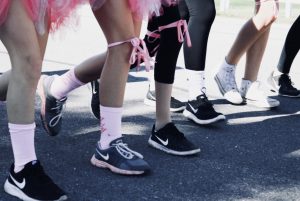Beast cancer is the most commonly diagnosed cancer in the United States apart from the various types of skin cancer. Keep in mind, there are many myths that surround this disease and make diagnosis even more terrifying. Knowing the truth about breast cancer and its symptoms can greatly alleviate your mind if you have been diagnosed with this disease or have a loved one who has received this diagnosis.

With advances in breast cancer screening, diagnosis and treatment, women with breast cancer are now living longer and often with a better quality of life. However, some women still die from breast cancer, and others live with long-lasting effects from their treatment.
In our modern and technical world, there are many things that make life more convenient. At the same time, however, many of those things contain a dark secret – carcinogens.
A sign is something that can be observed and recognized by a doctor or healthcare professional (for example, a rash). A symptom is something that only the person experiencing it can feel and know (for example, pain or tiredness). The signs and symptoms of breast cancer can also be caused by other health conditions. It is important to have any unusual symptoms checked by a doctor.
Signs and symptoms of breast cancer include:
- a lump in the breast – the most common first sign
- The woman usually finds the lump.
- Sometimes the lump is seen on a screening mammogram before it can be felt.
- The lump is present all the time and does not get smaller or go away with the menstrual cycle.
- The lump may feel like it is attached to the skin or chest wall and cannot be moved.
- The lump may feel hard, irregular in shape and very different from the rest of the breast tissue.
- The lump may be tender, but it is usually not painful.
- Pain is more often a symptom of a non-cancerous (benign) condition, but should be checked by a doctor.
- The woman usually finds the lump.
- A lump in the armpit (axilla)
- Sometimes small, hard lumps in the armpit may be a sign that breast cancer has spread to the lymph nodes. Although these lumps are often painless, they may be tender.
- Changes in breast shape or size
- Skin changes
- The skin of the breast may become dimpled or puckered. A thickening and dimpling of the skin is sometimes called orange peel skin, or peau d’orange.
- Redness, swelling and increased warmth (signs that look like an infection) may be a sign of inflammatory breast cancer.
- Itching of the breast or nipple may be a sign of inflammatory breast cancer.
- Itchiness is often not relieved by ointments, creams or other medications.
- Nipple changes
- Some people’s nipples are always pointed inward (inverted). Normal nipples that suddenly become inverted should be checked by a doctor.
- Discharge from the nipples can be caused by many conditions, most of which are non-cancerous (benign).
- Discharge from one nipple may be a sign of breast cancer, especially if it appears without squeezing the nipple (is spontaneous) and is blood-stained.
- Crusting, ulcers or scaling on the nipple may be a sign of some rare types of breast cancer, such as Paget disease of the nipple.
Late signs and symptoms
Late signs and symptoms occur as the cancer grows larger or spreads to other parts of the body, including other organs.
- Bone pain
- Nausea
- Loss of appetite
- Weight loss
- Jaundice is condition in which the skin and whites of the eyes become yellow and urine is dark yellow.
- Buildup of fluid around the lungs (pleura effusion)
- shortness of breath
- cough
- Headache
- Double vision
- Muscle weakness
Stay Connected

Who would I communicate with at your company about your google business listing? It may be unverified, incorrect or not listed at all on the voice search platforms such as Alexa, Siri, Bixby and Google Home.
I can send you the complete (free/no obligation) report to show you.
Let me know what email address/person to pass it over to?
Send your reply here: debbiesilver2112@gmail.com
Regards,
Debbie Silver
Hi there, thank you for reaching out! Please fill out the form on our Contact Us page located at the bottom of our site. 🙂
Good Morning
Buy medical disposable face mask to protect your loved ones from the deadly CoronaVirus. The price is $0.99 each. If interested, please visit our site: pharmacyusa.online
Best Wishes,
Breast Cancer Information and Awareness – American.org – americans.org